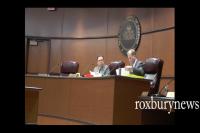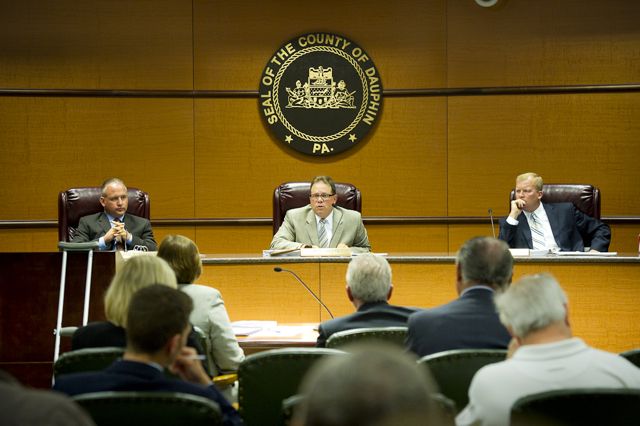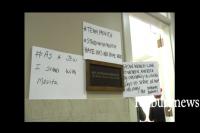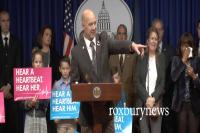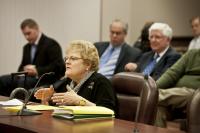From the United States Department of Housing and Urban Development.
Community Development Block Grant Disaster Recovery (CDBG-DR) for 2011 Disasters Frequently Asked Questions (FAQs)
1. What is the Community Development Block Grant program?
The Community Development Block Grant (CDBG) program is a program that provides communities with resources to address a wide range of unique community development needs. The CDBG program provides annual grants on a formula basis to more than 1,200 units of general local government and States. In certain situations, Congress provides additional CDBG funding specifically for disaster recovery purposes (CDBG-DR)
2. Who will receive disaster recovery grants for impacts from 2011 disasters?
The following states and local governments will receive funding from the allocation of $400 million in CDBG-DR funds under HUD’s Fiscal Year 2012 appropriation. The statute requires that funds be awarded to the most impacted and distressed areas.
State/Local Government
Orange County, NY $11,422,029
State of North Dakota $11,782,684
State of Alabama $24,697,966
Jefferson County $7,847,084
State of Missouri $8,719,059
State of Pennsylvania $27,142,501
($17,283,073) Bradford, Dauphin, Columbia, Wyoming, and/or Luzerne Counties.
Dauphin County, PA $6,415,833
State of Vermont Total $21,660,211
CDBG-DR Allocation
$400,000,000
Minimum amount to be spent in the “most impacted” counties identified.
All funds must be spent within jurisdiction No minimum; the amount of Minot’s direct grant ensures that more than 80% of total funding in the state will be spent within Ward County
($13,584,750)
Tuscaloosa, Marion, Jefferson and/or DeKalb Counties
All funds must be spent within jurisdiction No minimum; the amount of Joplin’s direct grant ensures that more than 80% of total funding in the state will be spent within Jasper County.
All funds must be spent within jurisdiction ($17,328,169) Washington and Windsor Counties.
State of New York
$71,654,116 ($53,011,323) Schoharie, Tioga, Broome, Greene, and/or Orange Counties.
Town of Union, NY
$10,137,818
All funds must be spent within jurisdiction.
City of Minot, ND
$67,575,964
All funds must be spent within jurisdiction.
City of Tuscaloosa
$16,634,702
All funds must be spent within jurisdiction.
City of Birmingham
$6,386,326
All funds must be spent within jurisdiction.
City of Joplin, MO
$45,266,709
All funds must be spent within jurisdiction.
Luzerne County, PA
$15,738,806
All funds must be spent within jurisdiction.
State of Texas
$31,319,686
($25,055,749) Bastrop County
State of New Jersey
$15,598,506
($12,478,805) Passaic County
2/17/2012
U.S. Department of Housing and Urban Development 13. Where did the $400 million come from?
The $400 million was appropriated by Congress under Section 239 of the Department of Housing and Urban Development Appropriations Act, 2012 (Public Law 112-55, enacted November 18, 2011).
4. How did HUD determine allocations?
Over the past decade, HUD has developed an allocation process which focuses on unmet recovery needs. To implement this process, HUD receives data from FEMA and the SBA identifying damage estimates in major disaster areas. It then considers the contribution of insurance, FEMA grants, and SBA loans in estimating the severe unmet needs not addressed by these sources. The complete methodology by which HUD estimated unmet needs will be published in the Federal Register Notice identifying the allocations and establishing program requirements.
5. How does the “80 percent rule” work?
Of all the funds awarded to a State and local governments within a State, 80 percent of funds must be spent in counties identified by HUD as having more than $10 million in estimated unmet severe housing and business needs. HUD specifically identified the amount each State must spend in these counties. A local government receiving a direct grant allocation from HUD must spend its grant within its jurisdiction, so in calculating the amount of funds a State grantee must use in these counties, HUD assumed that 100 percent of the local government’s grant would be spent in one of the most impacted and distressed areas and adjusted the State’s requirement accordingly.
6. Why do Orange County NY, Jefferson County AL, and Luzerne County, PA, each receive their own allocation yet appear as “most impacted” counties for their respective states?
These three counties are urban counties for purposes of the core CDBG program and they received direct allocations based on damage in the jurisdictions that participate in the respective urban county program. Funding based on damage in jurisdictions not participating in the respective urban county program is included in the direct allocation made to the State.
7. How is this funding different from disaster recovery funds provided by other federal and state agencies?
CDBG-DR funding supplements the Federal Government’s standard recovery assistance programs administered by the Federal Emergency Management Agency (FEMA), the Small Business Administration (SBA), and the United States Army Corps of Engineers (USACE). CDBG-DR funds must supplement, not replace, other sources of federal disaster recovery assistance.
2/17/2012 U.S. Department of Housing and Urban Development 2 8. How is CDBG for disaster recovery different from the core CDBG program?
With CDBG disaster recovery (CDBG-DR) funding, HUD provides grants to help cities, counties, and States recover from Presidentially-declared disasters. Unlike the CDBG grants awarded annually, CDBG-DR funds are appropriated by Congress only in extraordinary circumstances that have resulted in significant unmet needs for long-term recovery. In addition to any requirements cited in the appropriations statute, the traditional CDBG regulations in 24 CFR 570 apply to CDBG-DR funds. However CDBG-DR appropriations generally grant the Secretary broad authority to issue waivers and alternative requirements, which are identified in a Federal Register Notice issued by HUD shortly following the announcement of allocations.
9. What types of activities can CDBG-DR funding be used for? Grantees may use CDBG-DR funds for a variety of disaster recovery activities including housing, economic development, and infrastructure. When rebuilding, grantees may incorporate measures to prevent or mitigate damage from future disasters, such as elevating or incorporating roof tie-downs while rebuilding a damaged home. However, CDBG-DR funds cannot duplicate funding available from FEMA, SBA, USACE, insurance, or any other source.
10. As a State, what flexibility do I have in deciding what geographic areas can benefit from CDBG-DR funding?
HUD has identified the minimum amount of each State’s grant award that must be expended in the counties identified as “most impacted” (i.e., those with greater than $10 million in estimated severe unmet housing and business needs). Outside of that requirement, States may use CDBG-DR funding to address disaster-related impacts in any county that received a Presidential disaster declaration AND is eligible for FEMA Individual Assistance (IA) or Public Assistance (PA) for work in categories C through G.
11. Are there requirements to serve certain populations?
Yes. HUD intends to require that at least 50 percent of each CDBG-DR grant must be expended on activities that principally benefit low- and moderate-income persons. This is in comparison to the core CDBG program where the low-mod benefit threshold is 70 percent.
12. When will my jurisdiction/state be able to access CDBG-DR funds and what are the requirements?
Grantees will be able to access CDBG-DR funds after the grantee submits (and HUD accepts) its Action Plan for disaster recovery, a grant agreement is executed. HUD will publish a Federal Register Notice that includes the requirements for submitting an Action Plan for disaster recovery to HUD.
2/17/2012 U.S. Department of Housing and Urban Development 3 13. How many staff will I need in order to administer a disaster recovery grant?
This will vary depending on the size of your grant and current staff capacity. However, with the submission of your Action Plan, the jurisdiction will be required to certify that it has adequate capacity to administer the grant in a timely and compliant manner. The normal pressures of addressing day-to-day recovery issues as well as developing and implementing entirely new programs will undoubtedly require additional resources. Grantees are also encouraged to contact other jurisdictions that have CDBG disaster recovery grants to discuss approached to hiring and building capacity. A list of CDBG- DR grantees, and other resources, is available on the HUD CDBG-DR website.
14. What is considered timely administration of a CDBG-DR grant? CDBG-DR grant funds are available until expended. HUD waives the standard CDBG program timeliness requirements, however grantees are required to identify beginning and end dates for each disaster recovery activity and are asked to include performance and expenditure schedules as part of their Action Plans.
15. Is there a specific reporting system that I will be required to use to report outcomes, accomplishments, and expenditures?
Yes. CDBG-DR grantees must use HUD’s Disaster Recovery Grant Reporting (DRGR) System to establish the Action Plan activities, draw down funds, and report outcomes and accomplishments.
16. What type of training will my staff need in order to administer the grant?
Staff administering the grant and its programs/projects must have a core understanding of CDBG. To assist with helping staff understand CDBG disaster recovery grants, HUD offered CDBG-Dr grant administration training February 13-16, 2012 in Ft. Worth, Texas. Selected presentations and resources materials from the training will be available on the HUD CDBG-DR website. Standard courses on the basics of administering CDBG funds are also provided routinely throughout the country; more on these courses can be found under “training” at the HUD CDBG program website.
17. What guidance materials exist for the administration of CDBG-DR funds?
Grantees should consult the Federal Register Notice that describes the requirements of this grant. HUD CDBG disaster recovery guidance and training materials can be found on the CDBG disaster recovery
Photo/Natalie Cake file 2011


